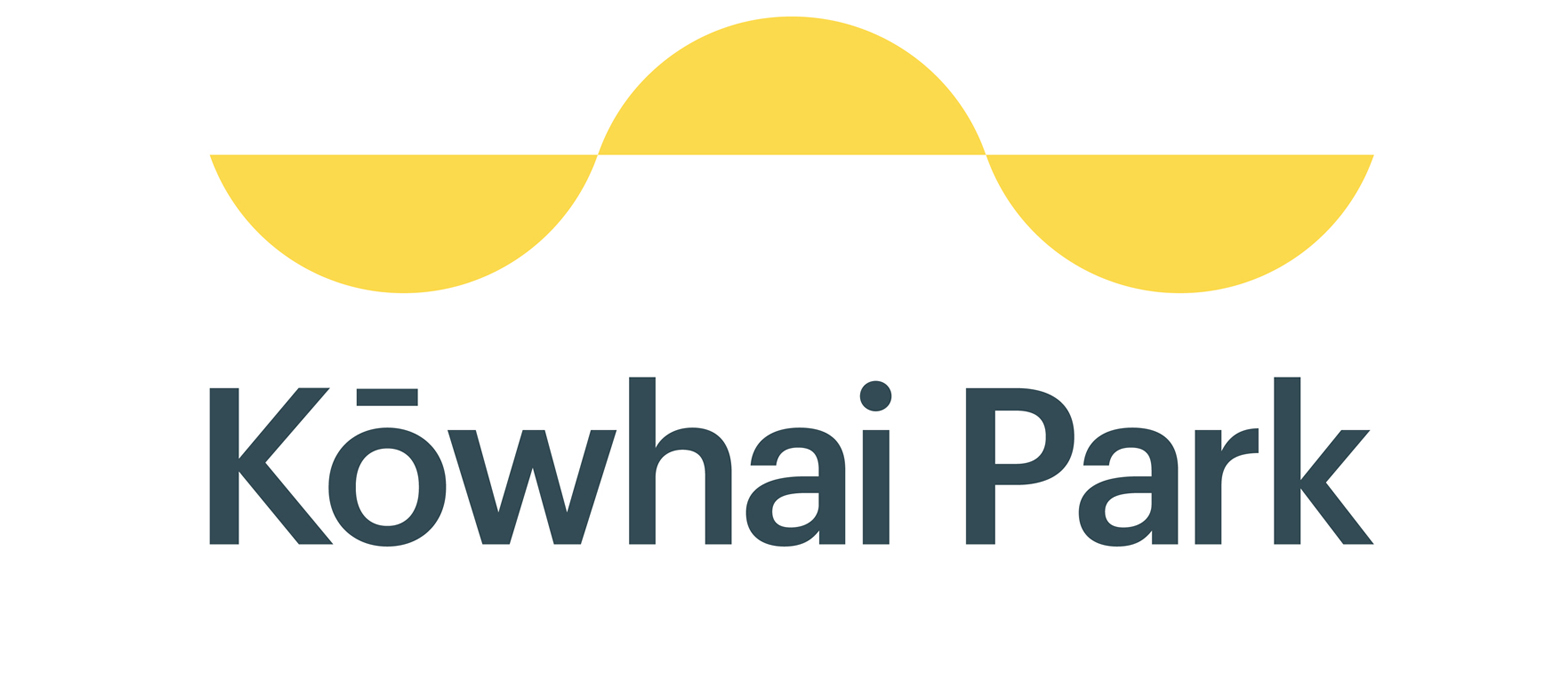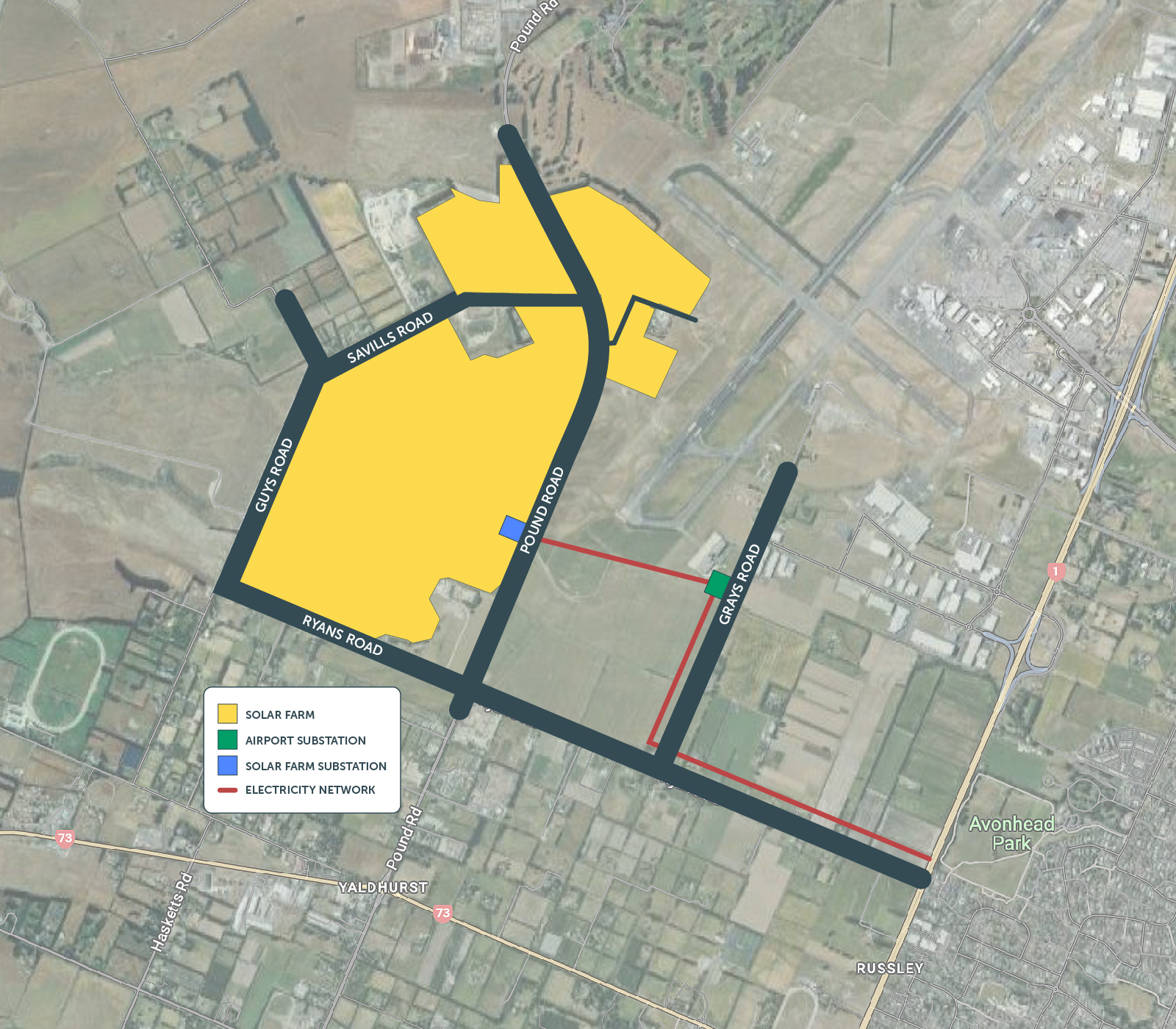Your questions answered
You might find the answer you're looking for here in our frequently asked questions. If there's something else you'd like to know, or if you would like to be part of Kōwhai Park, you can email the team at any stage.

-
Why is Christchurch Airport doing this?
You will find our motivation for developing Kōwhai Park on the Rationale page.
In short, Christchurch Airport has long prioritised sustainability – we’ve had our greenhouse gas emissions independently audited every year since 2006.
We’ve worked hard to systematically strip the carbon out of our business. We are currently nearly 90% down on our 2015 Scope 1 and 2 emissions levels and will always strive to do even more.
Kōwhai Park sees our business moving beyond internal emissions reduction to enabling others to decarbonise too, particularly our airline partners.
Globally, aviation accounts for around 2% of the world’s carbon emissions and the sector is committed to the Paris Agreement’s goal of net-zero carbon emissions by 2050.
A lot of work is going into decarbonising aviation – the development of new low and zero emission aircraft is a core part of this strategy, as is the commercial production of new Sustainable Aviation Fuels (SAFs) that can cut emissions by up to 80%.
By generating green energy just beside our airport’s runways, Kōwhai Park will be ready to provide the green energy sustainable aviation will require.
-
Why were Contact and Lightsource bp invited to deliver Phase One of Kōwhai Park?
Contact and Lightsource bp are committed to leading New Zealand’s decarbonisation to build a better Aotearoa, New Zealand.
In April 2022, the joint venture between Contact and Lightsource bp committed to creating up to 380,000 hours of grid scale solar generation by 2026.In August 2024, Contact Energy and Lightsource bp confirmed their investment, with construction due to commence in late 2024.
The teams are excited to announce our first solar farm development – the Kōwhai Park solar farm – and see this as an important first step in delivering on our grid scale solar aspirations, with the potential to provide 290 GWh of renewable power annually.
This is an example of corporations working together to build a better New Zealand with meaningful action behind those words. -
Why does New Zealand need more renewable energy?
New Zealand is one of 196 countries to have signed the Paris Agreement, a legally binding international treaty on climate change.
The best opportunity we have to lower our carbon emissions and meet our goals under the treaty is to adopt cleaner technology. In the aviation context, this includes low emission aircraft, decarbonising ground operations and the use of Sustainable Aviation Fuels (SAFs).
As a result, New Zealand’s demand for renewable energy is expected to grow rapidly.
Transpower (the national grid owner and operator) forecasts electricity demand will increase by 68% by 2050 and 40 new, grid-scale generation and batteries projects will be required before 2035.
-
What do we know about Phase One of Kōwhai Park?
Phase One will deliver one of the largest solar farms in New Zealand, generating 150 megawatts (or 170MWp) of renewable electricity.
The solar farm will span around 300-hectares and have a lifespan of 40 years. It will generate electricity to meet the future energy needs of both the airport and other aviation businesses, which will increase over time.
The site itself sits to the west of the airfield and is bounded by Pound, Ryans, Guys, Savills and Jessons Roads.

It is an optimal location for the proposed solar farm. Being located adjacent to the airfield will significantly reduce electrical losses when compared with power generation located remotely. In addition, Canterbury receives high solar generation hours.
Not only is it close to the energy users (including the airport and its airline customers), it is adjacent to Transpower’s national grid and Orion’s Canterbury lines network.
This will increase resilience in circumstances where generation does not meet airport demands and it is necessary to draw from the grid. It also enables the export of surplus energy into the grid. The balance between supply and demand will change as the airport’s energy demands grow over time.
Subject to a final investment decision, construction is expected to begin in 2024.
-
What is the timeframe for developing Phase One?
Construction will proceed in late 2024 and all going well, the Kōwhai Park solar farm is expected to be generating low carbon energy by 2026.
-
How much renewable energy could be generated at the Kōwhai Park solar farm?
The expected 150MW (or 170MWp) array will generate 290 GWh of electricity per year.
The energy produced will sustainably power the airport campus and future aviation activities, including terminal requirements, future electric plane charging and the production of SAFs for air transport.
By way of comparison to domestic electricity needs, this is equivalent to meeting the annual energy demands of approximately 36,000 homes.
-
What will the farm look like?
The Kōwhai Park solar farm will be a significant extension of the existing Christchurch Airport infrastructure and will include a solar array, internal accessways, fencing, lighting, buildings, electrical infrastructure and substations.
We’re undertaking an environmental assessment to feed into the final design and expect this will result in the development of measures to help it blend into the landscape.
The design process is underway and we’ll share it publicly, once it’s completed.
-
Is it safe to have solar panels near an airport?
Safety of flight operations is, of course, critical.
We are undertaking technical studies and consulting with our aviation sector stakeholders to confirm potential hazards have been identified and the project is safe.
Solar panels are designed to absorb the light, not reflect it.
There is a growing number of examples from all over the world where solar arrays are placed near airports. These include Hawkes Bay airport in New Zealand as well as Melbourne, Perth, San Francisco, San Diego, Denver, Cochin (India), Dubai, Antigua and Gautam (Nepal).
Lightsource bp has experience in developing solar farms near airport operations having done so in the United Kingdom.
-
What is green hydrogen?
Green hydrogen refers to hydrogen that is made using renewable resources to ensure it is environmentally sustainable.
-
Why is Kōwhai Park a good place to site renewable energy projects?
Kōwhai Park will form part of the Christchurch Airport campus. The airport, together with airlines, will be the ultimate users of the energy produced by the Kōwhai Park solar farm as aviation decarbonises.
Kōwhai Park, as a whole, has enormous potential – not just for solar but for other clean energies such as green hydrogen and SAFs, which will be required to power the new generation low and no carbon aircraft expected in New Zealand skies in the future.
Kōwhai Park also sits alongside New Zealand’s second largest city, as well as bordering both Transpower’s National Grid and the local Orion network. This means it can assist with the resilience of electricity supply in a changing climate.
-
I live close to Kōwhai Park or the airport. How can I stay up to date with what’s going on?
As we move into construction, Lightsource bp and Contact are best placed to provide updates as the project progresses.
If you have any questions please email solarprojects@contactenergy.co.nz or kowhaiparksolar@lightsourcebp.com
Find out more

Overview
Phase One is planned as a solar array larger than any other in New Zealand currently. However, Kōwhai Park is about much more than solar.

Rationale
Kōwhai Park will provide a resilient supply of clean energy which New Zealand needs to decarbonise through electrification.

Contact
If you have a question about Kōwhai Park, please visit our Contact Us page.